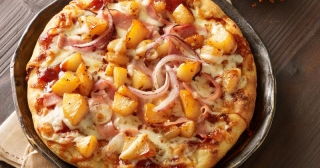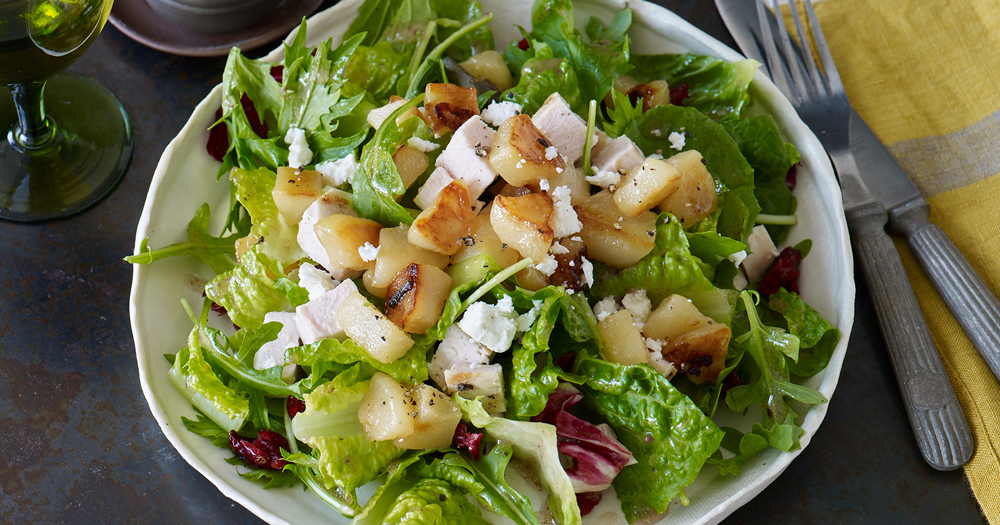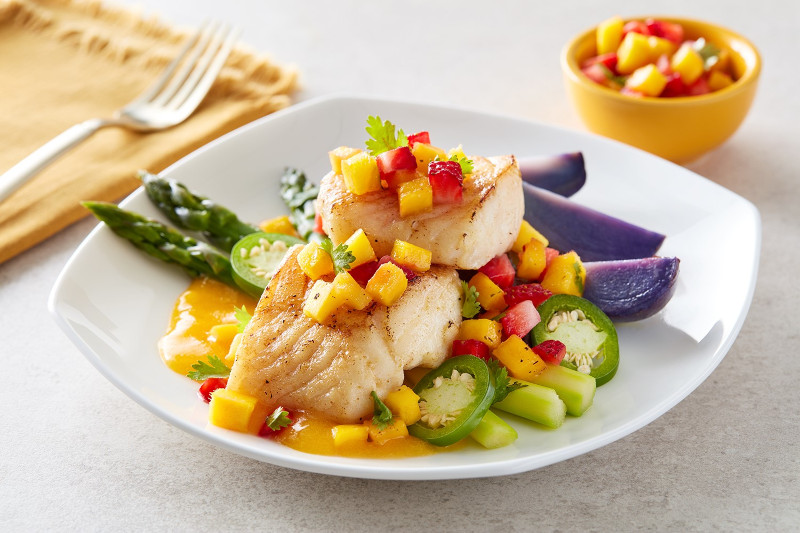
Lesson Plan: Evaluating Various Fruit Product Formats
05 June 2024Teach students how to evaluate different fruit product formats including fresh cut, frozen and canned for menu development.
Feedback & comments: This email address is being protected from spambots. You need JavaScript enabled to view it.
The drumbeat for eating more fresh fruit has never been louder and consumer awareness of the role that fruit plays on the menu, beyond the fruit cup, has never been greater. In restaurant kitchens fresh whole fruit isn’t always the best choice to achieve the desired outcome of a dish or operational efficiency in the kitchen. Using processed fruits can help manage prep time and control food waste while adding a fresh taste to the dishes’ flavor.
Include these objectives in your fruit format lesson plan:
- Maximize use of different fruit product formats available for year-round menu development – fresh, fresh cut, frozen, canned, dried, juice and puree.
- Understand how different formats can reduce waste in the foodservice kitchen.
- Explore how to use the whole fruit.
- Improve the quality, variety and appeal of fruit used on foodservice menus.
There is virtually no food waste in the manufacturing of processed fruit formats because logistics are efficiently managed in the field and at the processing plant. Waste is also minimized when processors use produce in formats other than fresh or fresh cut, where the fruit is less than picture-perfect but otherwise as delicious and nutritious.
 More chefs today are looking at using more than just the flesh of fresh produce. For example, it’s easy to reduce food waste by using the whole watermelon. Foodservice research shows that of the foodservice users familiar with pickled watermelon rind, 75% are interested in learning more about how to use it on menus. Consider using the rind for stir-fry, vegan curry, slaw and chutney that pairs the crunchy texture and slightly tart flavor of watermelon rind with the other ingredients.
More chefs today are looking at using more than just the flesh of fresh produce. For example, it’s easy to reduce food waste by using the whole watermelon. Foodservice research shows that of the foodservice users familiar with pickled watermelon rind, 75% are interested in learning more about how to use it on menus. Consider using the rind for stir-fry, vegan curry, slaw and chutney that pairs the crunchy texture and slightly tart flavor of watermelon rind with the other ingredients.
Fresh-cut produce is typically available halved, diced, cubed, sliced and planked. These products can save labor and provide consistency. For fruits like fresh mango, ripening is carefully managed before cutting to achieve the best eating quality. Many operators choose fresh-cut produce for the texture and flavor that it brings to a recipe, as well as following through on their commitment to using fresh ingredients. When cutting mango, consider adding the seed to sauces like a mole.
Ironically, frozen and canned fruit can have more flavor and the nutrient content is often comparable or better than fresh. It pays to taste as well as evaluate frozen and canned fruits based on how you plan to use the fruit.
For example, red raspberries grown for freezing are harvested at the peak of ripeness and are typically frozen close to where the fruit is grown. Processors often use Individual Quick Freezing technology to preserve the taste and aroma and to keep the individual berries and berry pieces separated for easy portioning. The only thing added in the process is cold air. Chefs probably wouldn’t use frozen raspberries as a garnish or where fruit integrity is essential, but sweet and savory applications like sauces/dressings, fillings, toppings/condiments, baked goods and beverages could benefit from the use of frozen fruit.
For canned fruits, such as Bartlett pears, that require ripening off the tree, the fruit is harvested when it’s mature. Pears are then carefully ripened by canners before canning. The result is a poached pear that is ripe and ready to use. Canning is a time-honored process, invented in 1810, and some chefs use this method to preserve their own crops for use at a later time. Canned halves, sliced and diced pears save labor, are easy to store and provide more versatility. For example, canned Bartlett pears are an easy way to add body and subtle flavor to smoothies. And oven roasting canned pears concentrates and caramelizes the sugars, leaving you with a flavorful ingredient for salads, pizza, sandwiches and desserts.
 One of the findings from Menu Matters 2024 Consumer Need States study was for operators to create value for today’s extra cost-conscious consumers. A few of the trends to leverage and support consumers’ need for value include: premium ingredients in small portion, unique/engaging innovation, bold flavors, and travel through food.
One of the findings from Menu Matters 2024 Consumer Need States study was for operators to create value for today’s extra cost-conscious consumers. A few of the trends to leverage and support consumers’ need for value include: premium ingredients in small portion, unique/engaging innovation, bold flavors, and travel through food.
Evaluating Fruit Formats
Click here for a chart to evaluate different formats of one or more fruit varieties. Instructors can set up the activity as one large group or break students into small groups, each with a different fruit. After students have evaluated the fruit’s sensory characteristics of appearance, flavor and texture, instructors can discuss different menu applications for each format.
Lesson Plan courtesy of Susan Hughes, a foodservice marketing consultant with a specialization in the produce industry.
